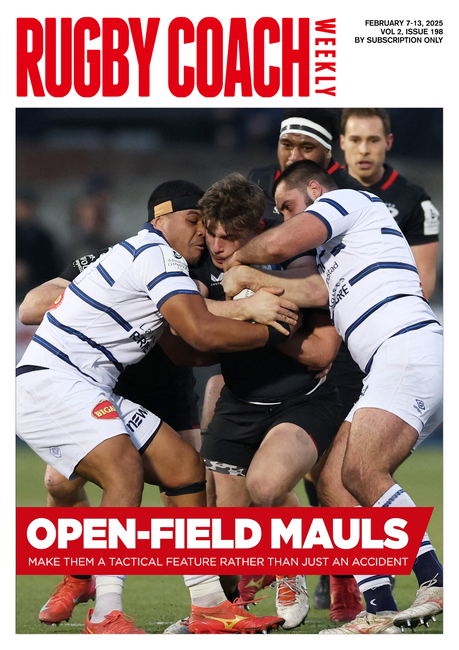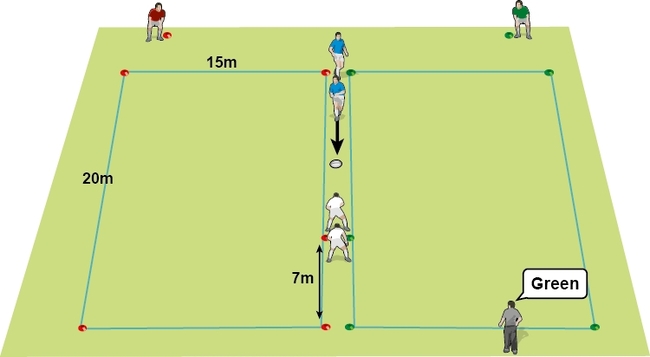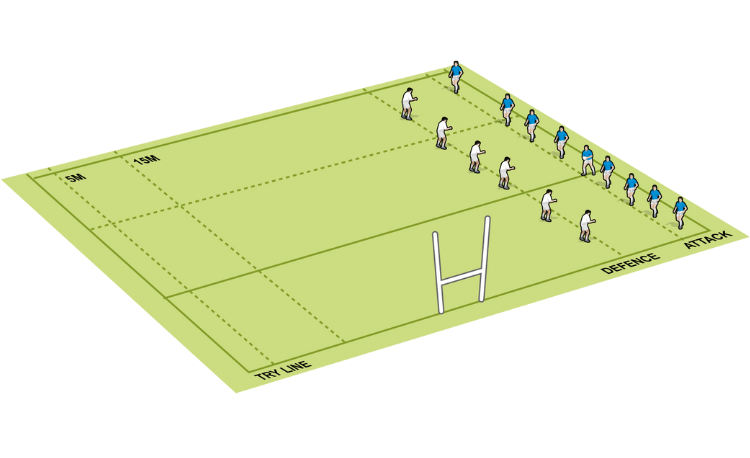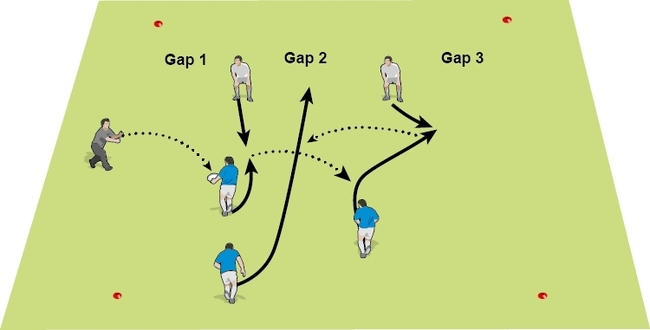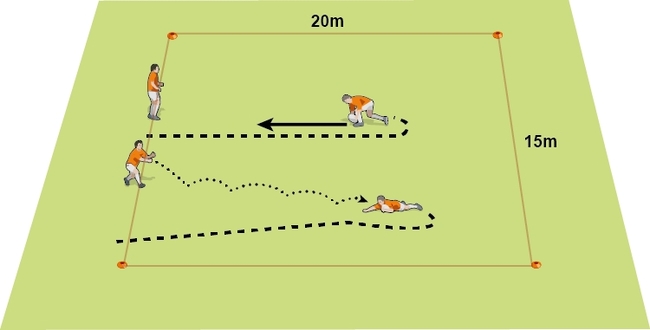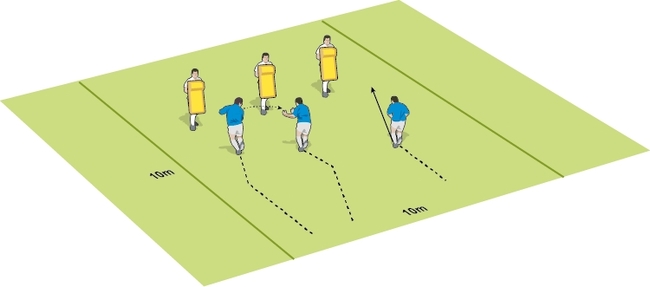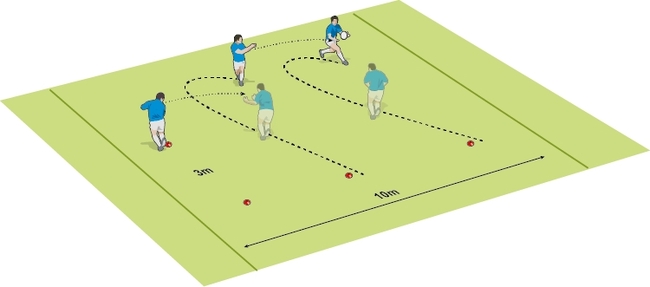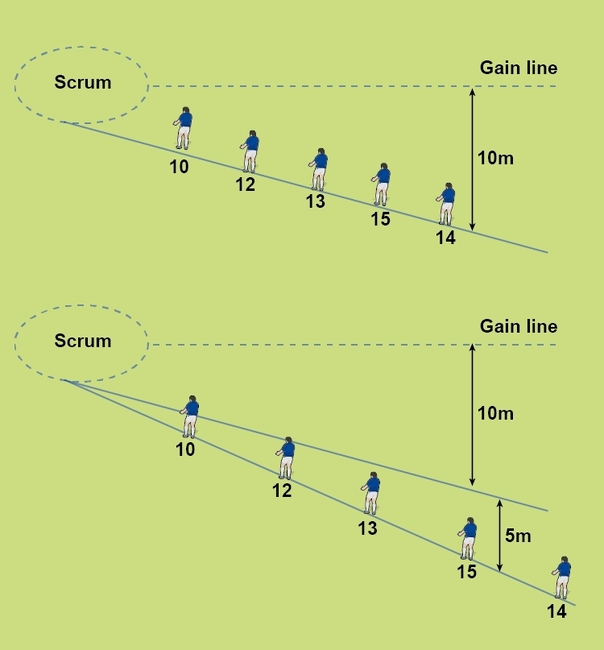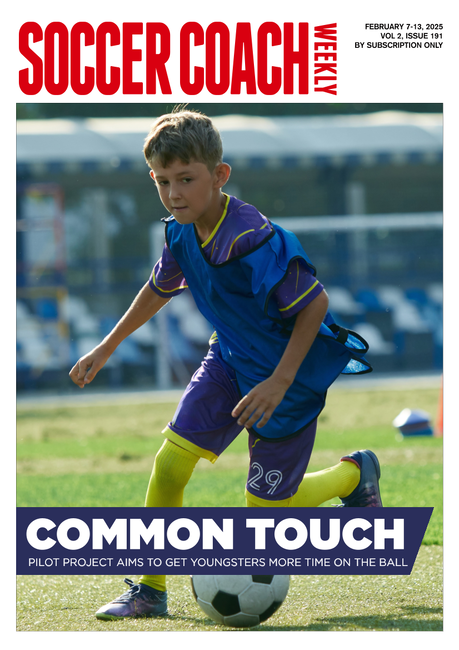Rugby coaching session on catching a high ball
The session
What you tell your players the session is about:
1. Catching high balls under pressure.
2. Supporting and moving the ball away from danger.
What you tell your players to do:
1. Call clearly and move into position early.
2. Reach up for the ball. Turn towards the nearest touchline.
3. Support players must work hard to get behind the catcher to provide options.
4. If there’s pressure, move the ball away from the catching zone. Otherwise, pop the ball to a supporter or prepare to maul.
What you get your players to do
Practice 1: In a small grid, a player throws a high ball. A receiver calls for the ball, catches it and pops it to another player. This continues, with each player having a number of throws, catches and pop passes.
Develop by making the thrower put pressure on the catcher. The supporter now has to make a decision on whether to take a pop pass or drive in on the catcher.
Practice 2: In a larger grid, one player kicks to a catcher with a support player. Another chases the kick. The catching team tries to beat the chaser and then the kicker.
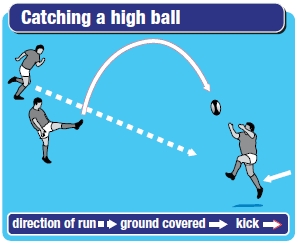
Developing the session
The training session can be developed as follows:
1. Add more chasers and supporters.
2. Change the size of the grid, making the chasers either further away or closer to the kicker and/or the catcher.
3. Change the type of kick, e.g. box kick, bomb, drop kick.
4. Make the supporters start in front of the catcher.
A game situation
Develop the session with these game situations and their typical catchers: A drop out (any forward); a box kick (the no. 8 or a winger); a high ball (the full back or a winger).
The scrum half or fly half kicks into a designated area on the pitch where these situations might occur (the kick does not have to be perfect). The players start from set positions (e.g. lineout, second phase breakdown).
Play through the situation and get quick feedback. Play again and then swap attackers and defenders. Focus on the session objectives, but allow players to make their own decisions. Develop the practice by halving the pitch size and the number of players.
What to think about
- When might you catch the ball on the run?
- What are the catcher’s options: Kick, pass, run?
- Should the catcher have two feet on the ground or jump for the ball?
- Calling the mark – is it always worth it?
- A counter-attack strategy: Kick, run back, pass and kick?
- Catching like an Aussie Rules player (reverse hands) or cradling (like a baby)?
- How should players use the elbows and fingers?
This article is from my Coaching Rugby manual, specially created for coaching core skills.
For more rugby coaching tips and products visit Rugby Coaching Club.
Newsletter Sign Up
Coaches Testimonials

Gerald Kearney, Downtown Las Vegas Soccer Club

Paul Butler, Florida, USA

Rick Shields, Springboro, USA

Tony Green, Pierrefonds Titans, Quebec, Canada
Subscribe Today
Be a more effective, more successful rugby coach
In a recent survey 89% of subscribers said Rugby Coach Weekly makes them more confident, 91% said Rugby Coach Weekly makes them a more effective coach and 93% said Rugby Coach Weekly makes them more inspired.
Get Weekly Inspiration
All the latest techniques and approaches
Rugby Coach Weekly offers proven and easy to use rugby drills, coaching sessions, practice plans, small-sided games, warm-ups, training tips and advice.
We've been at the cutting edge of rugby coaching since we launched in 2005, creating resources for the grassroots youth coach, following best practice from around the world and insights from the professional game.


